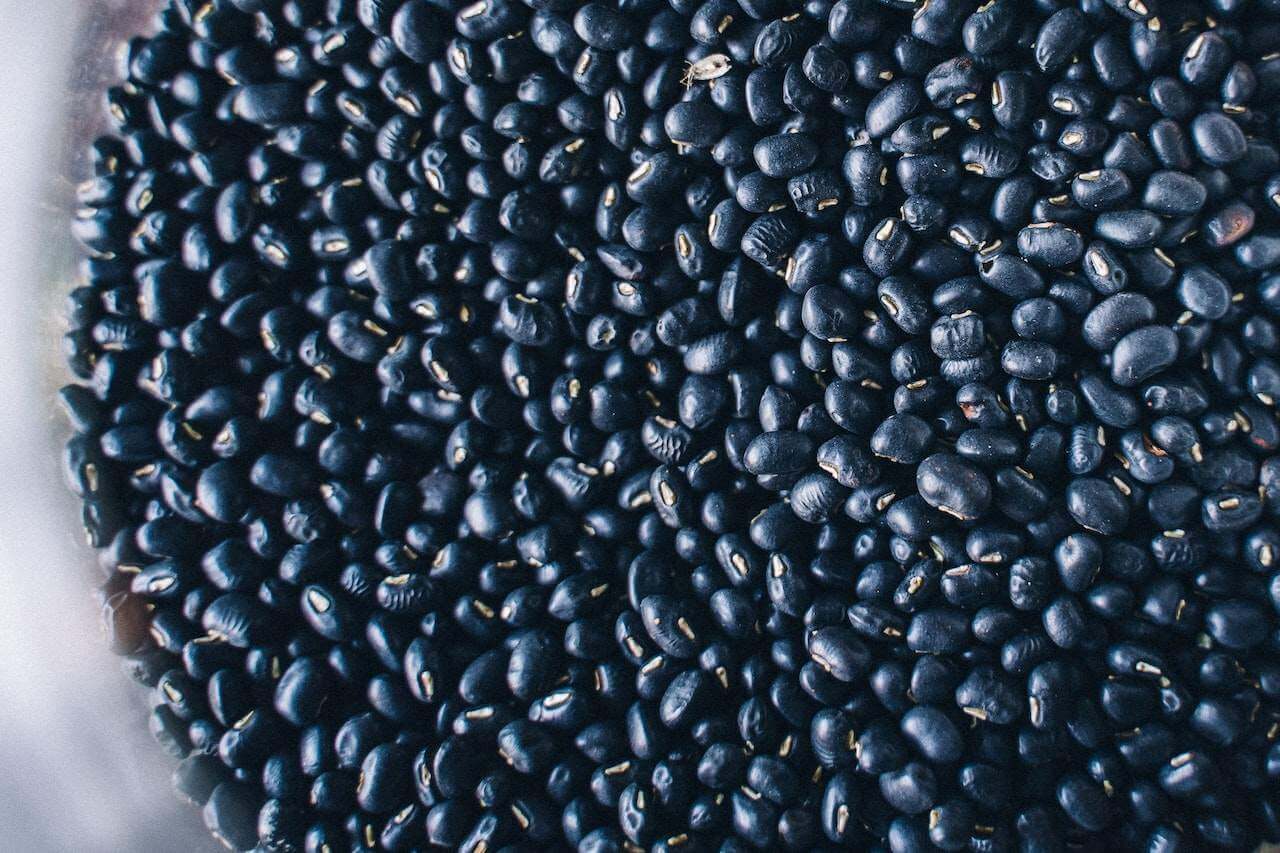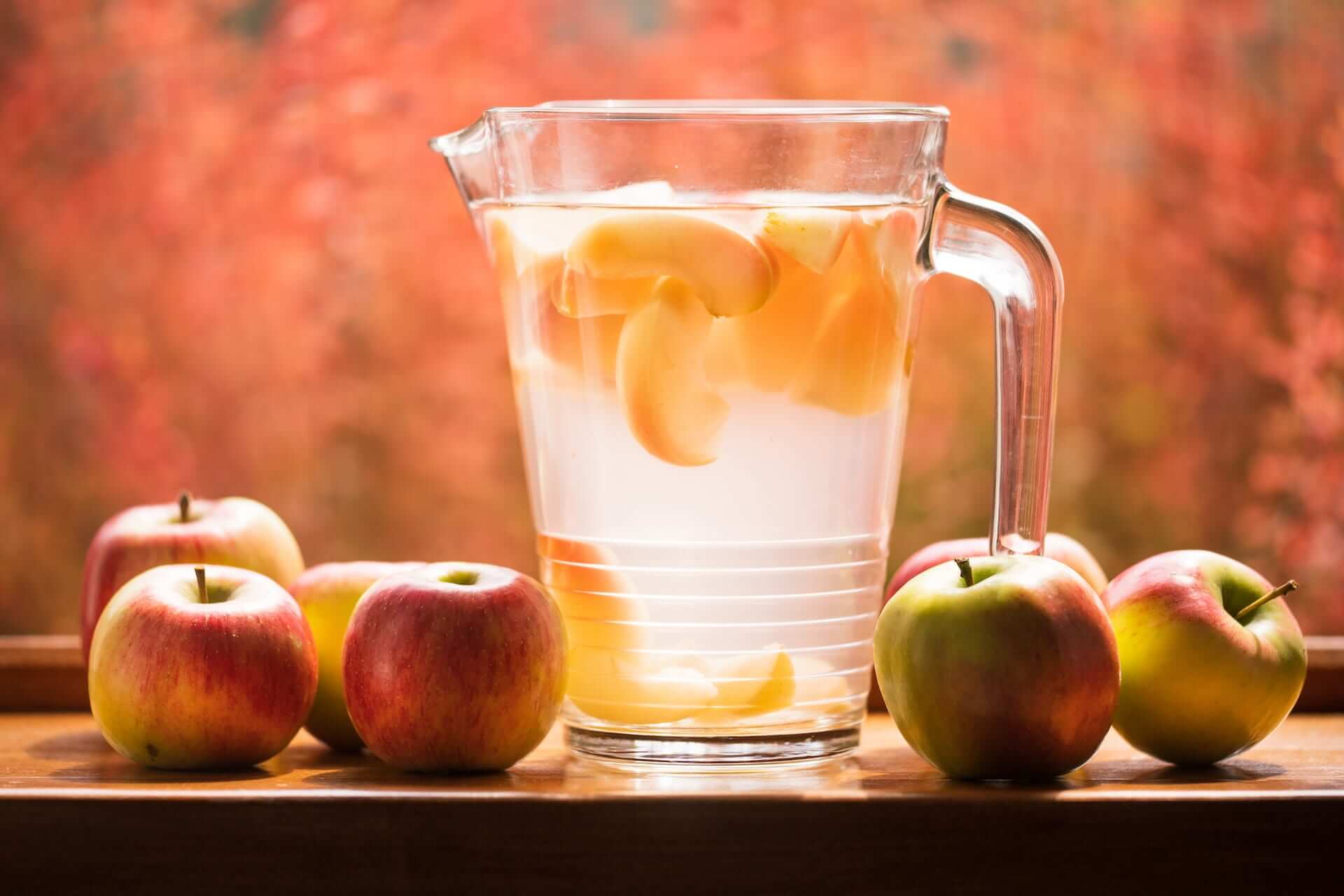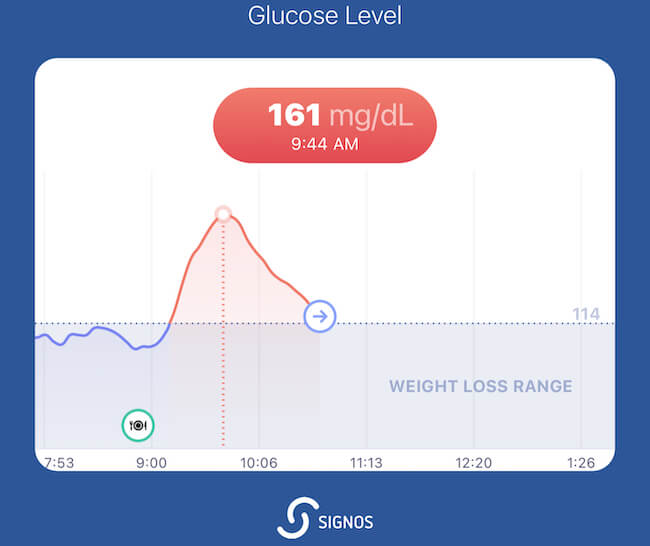Black beans are classified as legumes or pulses, along with chickpeas or garbanzo beans, lentils, and dried peas. Black beans and chickpeas are the most frequently consumed legumes in India, Latin America, and the Middle East. Their consumption is growing in the United States.1
Beans are indeed a magical fruit and superfood. Legume intake is associated with many health benefits ranging from increased satiety, improved body weight, and the prevention and management of chronic diseases like type 2 diabetes, metabolic syndrome, and heart disease.1
Legumes are a high-fiber, low-glycemic food due to their high amount of soluble fiber and slowly digestible fiber. This means you stay full longer, and your body has a slower digestion rate, improving blood sugar response. Additionally, these little beans provide plant-based proteins, polyphenols, and phytonutrients.1
In this article, you’ll learn about the benefits of black beans, their nutritional value, why they are considered a superfood, the side effects of eating black beans, tips for preparing them, and ways to include them in your diet.
{{mid-cta}}
Nutritional Value of Black Beans
All varieties of beans (legumes) are an excellent addition to your diet, but black beans are incredibly nutritious. Black beans are rich in fiber, plant-based protein, folate, copper, iron, thiamine, manganese, and magnesium.2 The Western diet often lacks fiber and essential nutrients like folate and iron. This superfood can help provide essential nutrients. A superfood is a nutrient-rich food that provides many health benefits.
Black beans are considered a low glycemic index food at 20.3 A food is a low glycemic index if between 1 and 55. The glycemic index is a 100-point scale measuring your blood glucose response after eating a specific food. High glycemic index foods raise blood sugar levels rapidly. In contrast, low glycemic index foods are digested slower due to fiber and other nutrient content, leading to a slower rise in blood sugar.4
One cup (180 g) of black beans provides:2
- Calories: 236
- Protein: 16 grams
- Fat: 1 gram
- Carbs: 42.5 grams
- Fiber: 15.5 grams
- Folate: 64% of the daily value (DV)
- Copper: 41% of the DV
- Thiamine: 35% of the DV
- Manganese: 33% of the DV
- Magnesium: 31% of the DV
- Iron: 20% of the DV
- Phosphorus: 35% of the DV
- Potassium: 18% of the DV
- Zinc: 18% of the DV
- Choline: 10% of the DV
- Vitamin B6: 9% of the DV
- Calcium: 5% of the DV
- Selenium: 4% of the DV
Including Black Beans in Your Diet: 5 Potential Benefits
Black bean intake is associated with many health benefits. Incorporating beans into your weekly routine can help maintain these benefits. Adding beans to a balanced diet is a great way to boost your health. Below are five potential health benefits of black beans.
Improves your blood sugar and insulin levels
Black beans are high in soluble fiber and contain plant protein, contributing to their low glycemic index.2,3,4 Replacing or pairing higher glycemic index foods with low glycemic index foods can help reduce blood sugar and insulin levels. The fiber found in legumes, like black beans, helps keep you full and is absorbed slower, which lowers blood sugar levels after meals.4
A small study on 12 women without diabetes showed that a half-cup of whole black beans (or chickpeas) with high-glycemic index white rice reduced glycemic response compared to those only eating rice. The black bean group had lower blood sugar two hours after eating the beans. Black beans are slightly higher in fiber and protein than chickpeas, which may have helped lower glucose levels.2
Another small study on 12 adults with metabolic syndrome compared fiber and antioxidant levels of black beans and their ability to reduce after-meal insulin, antioxidant blood levels, and glucose response.5 The researchers compared a black bean meal, an antioxidant-matched meal, and a fiber-matched meal.
The average 5-hour insulin response after eating the black bean meal was 34% lower than the antioxidant-matched meal. The fiber-matched meal was 24% lower than the antioxidant-matched meal. No significant effects were seen in antioxidant levels after the meals. Still, the antioxidant-matched meal showed the highest levels, with black beans closely behind, and last was the fiber-matched meal.5
It is thought that the high anthocyanin content of black beans might help improve insulin response. Other studies have shown that anthocyanin intake is associated with improved insulin levels and reduced inflammation.5 The combination of anthocyanin and fiber lower the glycemic response.
Good gut health
Studies have shown the health benefits of dietary fiber from unrefined whole foods like whole grains, legumes, vegetables, and fruit on gut health. The fiber from these foods helps with digestion, absorption, reduction of constipation, optimal movement time through the intestines, and positive changes in gut bacteria.6
The Dietary Guidelines for Americans recommend eating one and a half cups of cooked beans weekly and getting 14 g of fiber for every 1000 calories consumed. Most adults consume about 25 to 35 g of fiber daily.7 A half cup of black beans provides almost 8 g of fiber.2
Diets high in fiber help feed your gut bacteria. As fiber is digested and the gut bacteria consume the fiber, the bacteria produce a beneficial by-product called short-chain fatty acids. Higher amounts of short-chain fatty acids in the gut have been found to reduce inflammation and prevent GI dysfunction, obesity, and type 2 diabetes.8
Enhanced heart health
Plant-based diets are known for preventing heart disease.9 A large prospective study included 210,298 adults free of chronic disease at baseline.
The researchers created a plant-based diet index by assigning positive scores to healthy plant foods and reverse scores to animal or unhealthful plant foods (sugar-sweetened beverages, refined grains, fries, sweets). Healthful plant-based foods include whole grains, fruits, vegetables, nuts, legumes, oils, unsweetened tea, and coffee.9
At baseline, average plant-based diet index scores were 42 to 44 in the lowest group and 66 to 68 in the highest group. After examining associations of plant-based diet index scoring and development of heart disease, promising results support a whole-food plant-based diet including legumes.
A higher intake of healthful plant-based foods was associated with a substantially lower risk of heart disease, and consuming more unhealthy plant foods was associated with a higher risk.9
Soluble fiber found in black beans can help reduce total and LDL cholesterol. Black beans contain about 2 g of soluble per cup of cooked beans.10 This simple addition is just one dietary change to help prevent heart disease.
Black beans are also low in sodium and contain potassium, calcium, and magnesium, all of which naturally decrease blood pressure.
Packed with antioxidants and nutrients
Antioxidants help to reverse oxidation and inflammation caused by oxidation. Oxidation and inflammation are linked to chronic diseases like diabetes and heart disease.10 Oxidation increases in the body because of pollution, environmental factors, poor diet, stress, smoking, and excess sun.
Black beans are full of antioxidants, particularly polyphenols like saponins, phenols, and flavonoids, that help combat the development and progression of chronic disease.10
Anthocyanin is a type of flavonoid found in large amounts in black beans. Anthocyanin intake is associated with improved insulin levels and reduced inflammation.5
Including black beans in your diet increases protein, dietary fiber, and micronutrients like iron and folate.2,5 These nutrients aid in optimal functioning and health. Black beans are nutrient-dense nature-made capsules with many health benefits and provision of key nutrients, vitamins, and minerals.2
Assists with weight loss
Black beans can help with weight loss due to their high protein and fiber content.2 The fiber can help keep you full and reduce cravings.
Body composition can improve with more legume intake, including black beans. A study on 246 women found that as legume intake increased, body composition improved. Those consuming the lowest amount of beans and legumes had substantially higher body fat levels and larger waist circumferences than those consuming more beans and legumes.11
Black beans can help you with weight management and help you eat less by keeping you full longer, preventing mindless snacking.
Uncovering the Drawbacks: 4 Potential Disadvantages of Black Beans
Many are surprised that there are some drawbacks to consuming beans and legumes. Black beans (and other beans) contain compounds called ‘anti-nutrients.’
Research has shown apparent benefits and drawbacks for plant foods that contain ‘anti-nutrients’ like lectins, protease inhibitors, tannins, and phytates.10,12
Anti-nutrients from plant foods can be harder for the body to digest and may reduce the availability of critical nutrients. Consumption of large amounts of anti-nutrients can multiply this effect.12
Lectins
Dietary lectins, or plant hemagglutinins, are proteins that bind to carbohydrates and are found in all plants. This protein-carbohydrate bond protects the plant in the wild but can cause difficulty with digestion.
When eaten uncooked and raw, the lectins pass through the gastrointestinal tract unchanged. As lectins reach the small intestine, they can bind to receptors on the intestinal cell lining and cause damage.12
Fortunately, this effect is only seen in raw beans. Cooked whole beans cause no intestinal changes, and the lectin level is within the safe range. Raw beans taste terrible, preventing too much lectin intake.12
Protease inhibitors
Protease inhibitors discourage how well digestive enzymes break down legumes like black beans. Again, this effect is only seen in the raw form. This issue is resolved when the beans are cooked, and the anti-inflammatory benefits of protease inhibitors remain.10
Tannins
Tannins are considered anti-nutrients because they have the potential to inhibit iron absorption and can negatively impact iron stores. Cooking beans reduces this effect.12
Research does not find significant risk factors from consuming foods rich in tannins since they are combined with other foods. Research supports their intake due to an abundance of positive effects of tannins in the body.12
Phytates or Phytic Acid
Phytates are considered anti-nutrients because they are not digested well by humans, making some minerals found in black beans, like iron and zinc, less available for absorption.10 However, this slower digestion leads to black beans being a low glycemic index food beneficial for metabolic syndrome, diabetes, and heart disease.
Research has shown that as long as black beans are included in a diverse diet, the benefits of black beans strongly outweigh any negatives from phytate, tannin, lectin, or protease inhibitor content.
Black Beans: How to Include Them in Your Diet
Fortunately, most of the potential downsides of anti-nutrients of black beans are alleviated by cooking them properly!
Soaking raw legumes, beans, or lentils covered in water for 10 to 12 hours helps remove anti-nutrients. Then, drain the beans, add fresh water, and boil for 30 to 60 minutes to reduce their anti-nutrient levels to safe levels. Depending on your recipe, you can boil for longer, but the anti-nutrient levels are safe after about an hour of boiling.10

For convenience, purchasing no-added salt canned beans ensures the beans have been cooked properly as they have already been soaked and cooked. Buying no-added salt canned versions and then rinsing reduces the higher amount of sodium often found in canned products.
Additionally, black bean germination and fermentation (or sprouting) can reduce anti-nutrient levels. Sprouted beans must be cooked afterward.10
Try some of these ideas to boost your black bean intake:
- Black Bean Dark Chocolate Muffins: Rinse a 15-oz can of black beans and then blend with eggs, vanilla, unsweetened dark cocoa powder, baking powder, maple syrup or honey, and some salt and top with dark chocolate chips before baking. The delicious, gluten-free muffins are a great alternative to high-glycemic donuts and other sugary low-fiber breakfast options.
- Black Bean Burgers with Sliced Avocados: Roast canned black beans in the oven. Sauté garlic, onions, peppers, and seasonings. Mash these first ingredients with eggs, breadcrumbs, and ketchup. The burgers are then molded into patties and can be baked or grilled. Serve with your favorite toppings.
- Loaded Plant-Based Nachos: For an easy weeknight meal or snack, line a baking sheet with a thin layer of tortilla chips, drained and rinsed black beans, sautéed peppers and onions, and bake. Then add more toppings, such as your favorite cheese, jalapenos, cilantro, or salsa.
- Black Bean, Corn, and Avocado Salad: This quick, no-cook recipe is a great side or main dish. Combine drained and rinsed canned black beans with fresh corn cut off the cob, quartered grape tomatoes, jalapenos, onion, avocado, and cilantro. Make a vinaigrette and mix it all. Some like to add quinoa to this salad for a different twist. This salad can be served cold or at room temperature.
- Heart-Healthy Chili: Take your favorite chili recipe and substitute a third of the chili beans for black beans. Or you can add an extra can of beans to stretch the recipe with plant-based protein and your choice of ground meat. Black beans add flavor and are appealing to most people. Incorporating tomatoes, cooked red peppers, onion, and garlic makes chili a diverse and filling plant-rich meal.
Learn More About Superfoods to Include in Your Diet with Signos’ Expert Advice
Individual foods like black beans can boost nutrient intake and prevent or manage chronic health conditions. Incorporating black beans into a diverse and balanced diet can enhance the benefits. Tools like a continuous glucose monitor (CGM) can help you know how your body responds to different foods, aiding you in your journey toward better health.
A Signos’ CGM can help you improve your health. Take a quick quiz to determine if Signos is a good fit for you. Learn more about nutrition and healthy habits on Signos’ blog.
- Item 1
- Item 2
- item 3
Topics discussed in this article:
References
- Winham, D. M., Hutchins, A. M., & Thompson, S. V. (2017). Glycemic Response to Black Beans and Chickpeas as Part of a Rice Meal: A Randomized Cross-Over Trial. Nutrients, 9(10), 1095. https://doi.org/10.3390/nu9101095
- USDA FoodData Central. (2022, Oct 28). Food Details - Black beans, from dried, no added fat. Retrieved from https://fdc.nal.usda.gov/fdc-app.html#/food-details/2342836/nutrient
- Foster-Powell, K., Holt, S. H., & Brand-Miller, J. C. (2002). International table of glycemic index and glycemic load values: 2002. The American journal of clinical nutrition, 76(1), 5–56. https://doi.org/10.1093/ajcn/76.1.5
- Carbohydrates and blood sugar. (2016, July 25). The Nutrition Source. https://www.hsph.harvard.edu/nutritionsource/carbohydrates/carbohydrates-and-blood-sugar/
- Reverri, E. J., Randolph, J. M., Steinberg, F. M., Kappagoda, C. T., Edirisinghe, I., & Burton-Freeman, B. M. (2015). Black Beans, Fiber, and Antioxidant Capacity Pilot Study: Examination of Whole Foods vs. Functional Components on Postprandial Metabolic, Oxidative Stress, and Inflammation in Adults with Metabolic Syndrome. Nutrients, 7(8), 6139–6154. https://doi.org/10.3390/nu7085273
- Gill, S. K., Rossi, M., Bajka, B., & Whelan, K. (2021). Dietary fibre in gastrointestinal health and disease. Nature reviews. Gastroenterology & hepatology, 18(2), 101–116. https://doi.org/10.1038/s41575-020-00375-4
- Current Dietary Guidelines. (n.d.). Dietary Guidelines for Americans. https://www.dietaryguidelines.gov/current-dietary-guidelines
- Blaak, E. E., Canfora, E. E., Theis, S., Frost, G., Groen, A. K., Mithieux, G., Nauta, A., Scott, K., Stahl, B., van Harsselaar, J., van Tol, R., Vaughan, E. E., & Verbeke, K. (2020). Short chain fatty acids in human gut and metabolic health. Beneficial microbes, 11(5), 411–455. https://doi.org/10.3920/BM2020.0057
- Satija, A., Bhupathiraju, S. N., Spiegelman, D., Chiuve, S. E., Manson, J. E., Willett, W., Rexrode, K. M., Rimm, E. B., & Hu, F. B. (2017). Healthful and Unhealthful Plant-Based Diets and the Risk of Coronary Heart Disease in U.S. Adults. Journal of the American College of Cardiology, 70(4), 411–422. https://doi.org/10.1016/j.jacc.2017.05.047
- Chávez-Mendoza, C., & Sánchez, E. (2017). Bioactive Compounds from Mexican Varieties of the Common Bean (Phaseolus vulgaris): Implications for Health. Molecules (Basel, Switzerland), 22(8), 1360. https://doi.org/10.3390/molecules22081360
- Tucker L. A. (2020). Bean Consumption Accounts for Differences in Body Fat and Waist Circumference: A Cross-Sectional Study of 246 Women. Journal of nutrition and metabolism, 2020, 9140907. https://doi.org/10.1155/2020/9140907
- Petroski, W., & Minich, D. M. (2020). Is There Such a Thing as "Anti-Nutrients"? A Narrative Review of Perceived Problematic Plant Compounds. Nutrients, 12(10), 2929. https://doi.org/10.3390/nu12102929
































